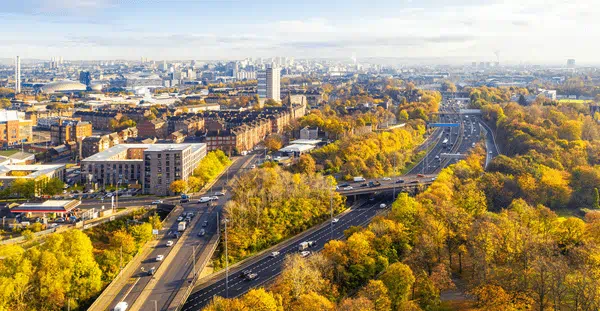Choice. We are surrounded by it. But with the average person making around 35,000 conscious decisions every single day, when does choice become too much? Of course, there is a big difference between choosing what to have for lunch, and choosing which technology to install in your smart building, but when it comes to the Internet of Things (IoT) – a system of interrelated objects that can collect and transfer data over a network, integral to the operation of intelligent buildings – the possibilities are endless. How can we successfully navigate our way through?
Review the options
Estimates suggest that by 2025, there will be 152,200 IoT devices connecting to the internet every minute, generating as much as US$11 trillion in economic value. The numbers are staggering and, in such a rapidly growing market, it’s no wonder we might struggle to keep pace.
If you own or operate a building and are considering smart technology – whether in an office development, hospital, manufacturing site or warehouse – you will be confronted with a plethora of options. Throw in Blockchain and Big Data alongside IoT, and it’s not just difficult to know where to start, suddenly you’re talking an entirely new language. An understanding of built assets is no longer enough in the face of such a rapidly evolving technology world, and it can be challenging knowing how to combine the two in the best way.
The situation becomes increasingly complex when you consider the sheer number of technology providers in the marketplace – and more are setting up businesses every day. They each offer very specific point-solutions, making it hard to compare products and results. Technology is often bespoke to a building, making procurement decisions a logistical nightmare for any non-tech specialist. And on top of this, there are numerous different models for how to purchase this array of new technology.
When it comes to equipping your intelligent building with the right tools, devices and interfaces, it is – quite simply – a jungle out there.
Assess the benefits
Education has a huge part to play when it comes to navigating this new environment. Digital literacy is key, and often this means taking the time to upskill and broaden knowledge into new areas. The market for intelligent buildings is still growing, and as an industry we need to find a way to overcome the tension between established building and procurement processes, and the fast-paced world of digital start-ups.
Crucially, owners and occupiers need to understand how to model the benefits of smart technology. Is this new app just part of the latest craze, or will it deliver long-term, tangible benefits to the bottom line? It’s important to consider what you want smart technology to achieve. Whether its reducing running costs, cutting carbon, or improving how spaces are being used, different combinations of systems will deliver different results and you need to cost the benefits accordingly.
Tools like our Cost Calculator can help, but often it’s a case of working collaboratively with providers, consultants and specialists to shape the space and design the most appropriate solutions together. With no one-size-fits-all approach to creating an intelligent building, comprehensive digital solutions that can aggregate information into a single source of truth can be invaluable when it comes to assessing – and reassessing - the effectiveness of any approach.
Mistakes can be costly, which is why it’s important to ensure you have the right knowledge and expertise at hand to support you from the outset. For many organisations, the level of innovation required in creating and operating a smart or intelligent building is a first and, with so much at stake, you want to make sure you get it right first time. These are the buildings of the future, and the choices you make now will define how well the space works for generations to come.
Contact Martjin Karrenbeld at martijn.karrenbeld@arcadis.com




